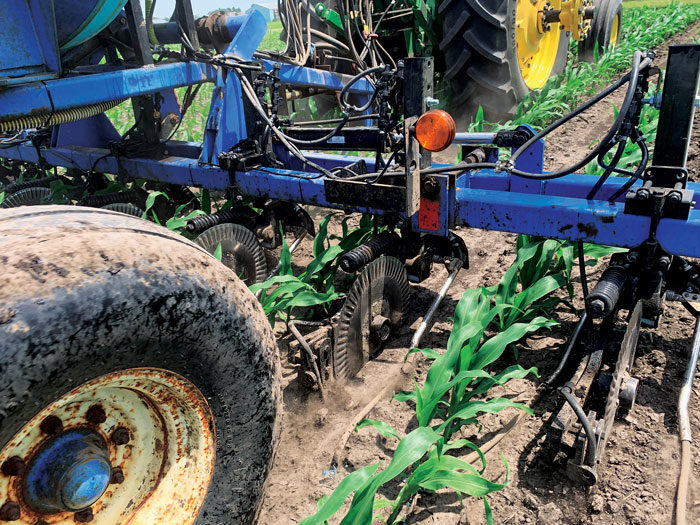No-Till Farmer
Get full access NOW to the most comprehensive, powerful and easy-to-use online resource for no-tillage practices. Just one good idea will pay for your subscription hundreds of times over.

SIDEDRESSING PLACEMENT. Steve Gauck, an Indiana no-tiller and regional agronomy manager at Beck’s Hybrids, says he’s seen the best success with a 2-by-2-by-2-inch sidedress configuration — applying nitrogen (N) 2 inches from the seed, 2 inches deep and on both sides of the row. Providing N to both sides instead of one helps encourage good preferential root growth from both sides of the plant. Image: Farm Innovations
| credit imageMany farmers are well-versed in the 4Rs of nutrient stewardship: apply the right source at the right rate, at the right time, in the right place. Following this framework ensures crops use nutrients efficiently and effectively, helping no-tillers maximize their fertilizer budget.
But while the 4Rs are straightforward, putting them into practice can be easier said than done. Steve Gauck, Indiana no-tiller and regional agronomy manager at Beck’s Hybrids, and Ohio State University soil fertility specialist Steven Culman share their tips for applying the three macronutrients — nitrogen (N), phosphorus (P) and potassium (K) — as well as micronutrients to no-tilled corn, soybeans and wheat.
When it comes to applying N to corn, Gauck says it’s best to think about feeding the crop like you feed yourself.
“We have three meals a day. We don’t eat one giant meal at breakfast and hope we make it all day,” he says. “We think about corn the same way. N is food. Split applying and timing that is extremely important.”

WHICH SYSTEM IS BEST? Beck’s Hybrids Practical Farm Research assessed three 2-by-2-by-2-inch systems and found all increased corn yield by at least 6 bushels and provided a return on investment with no more than 430 acres. Another 4-year study by Beck’s showed that applying 30 units of N in a 2-by-2-by-2-inch system yielded an average 5.7 bushels more than 30 units applied in a 2-by-2-inch application on one side of the row. Table: Beck’s Hybrids